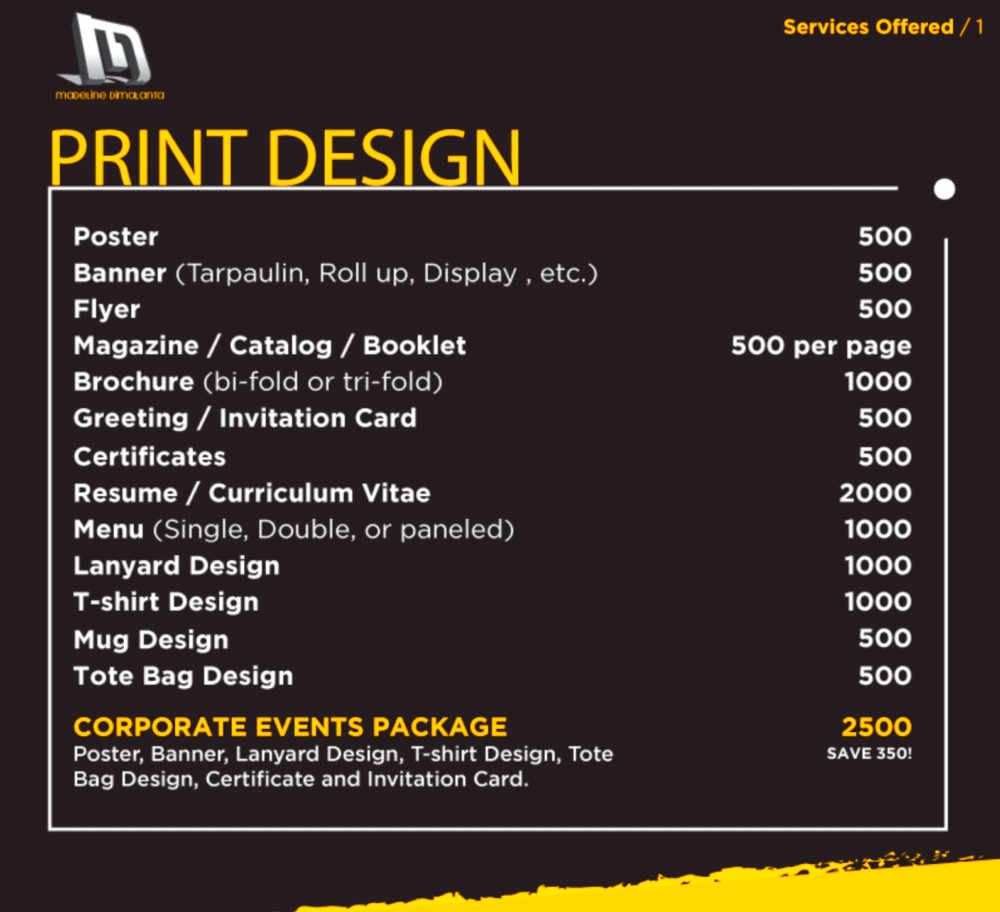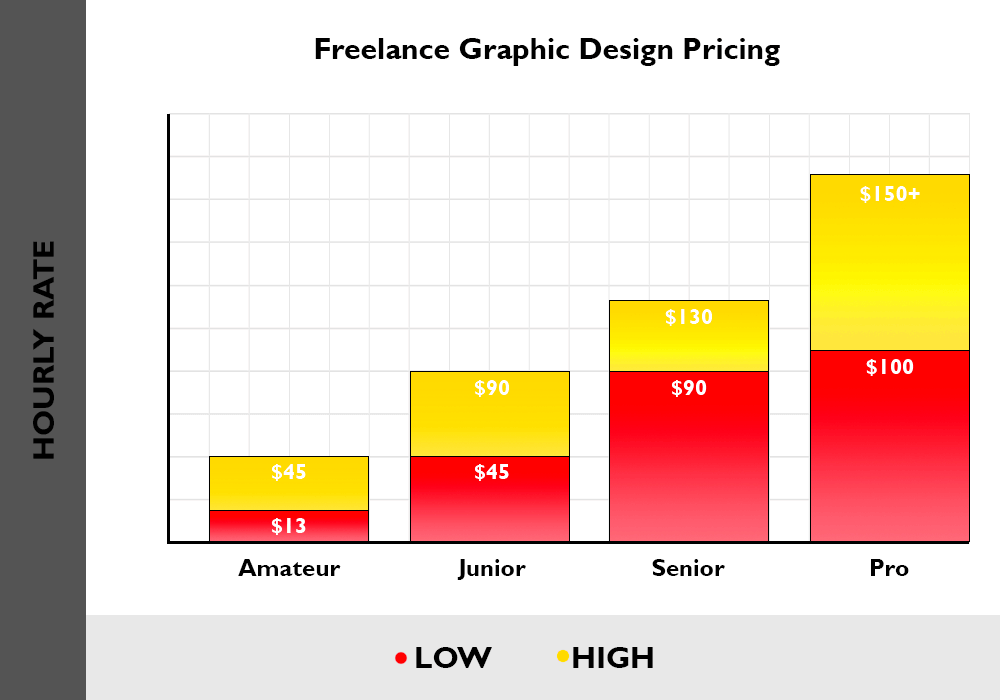Freelance graphic designers have the liberty of setting their own rates but how much should you charge or expect? Rates differ based on several factors such as experience, type of project and location. It is important for both a designer who is new to the field and a client looking to hire one to understand the fundamentals of pricing so as to make wise decisions. This post covers what one must know about freelance graphic design rates in order to understand fair pricing principles.
Factors That Influence Graphic Design Pricing

For hiring a freelance graphic designer or setting your own rates, there are various factors affecting the price. Most common factors include:
- Experience Level: More experienced designers tend to charge higher rates due to their expertise and portfolio.
- Project Complexity: A simple logo design will generally cost less than a full brand identity or website design.
- Turnaround Time: Projects with tight deadlines often come with higher rates due to the urgency.
- Revisions: Some designers include a limited number of revisions in their rates, while others charge extra for additional changes.
- Location: Freelance rates may vary based on the country or city where the designer or client is based, as cost of living affects pricing.
- Licensing and Usage: The intended use of the design—such as for print, digital, or commercial purposes—can also influence pricing.
Sometime clients utilize designers expect a specific output; therefore, factors such as designing quality may greatly influence how much one pays for their work. Thus, it would be much easier if they set the right budget assuming that the kind of work done determines its pricing.
Also Read This: How to Become a Creator on Fiverr
Types of Graphic Design Services and Their Costs

This can be attributed to the fact that graphic design is quite an expansive area hence determining the pricing will heavily depend on what service a particular client require. Here are some frequently offered graphic design services and their corresponding prices:
| Service Type | Price Range (USD) |
|---|---|
| Logo Design | $100 - $1,500 |
| Business Card Design | $50 - $500 |
| Website Design | $1,000 - $10,000+ |
| Social Media Graphics | $50 - $1,000 |
| Brochure or Flyer Design | $200 - $2,000 |
| Brand Identity Package | $1,000 - $5,000+ |
Although these ranges are flexible, they provide an essential standard that can help comprehend the probable expenses associated with various forms of graphic designing services.
Also Read This: How to Get Fiverr Money Cleared Faster
Average Rates for Different Graphic Design Experience Levels
Charges at which individuals dealing in design may be credited really differ from person to person based on many factors. For instance, when one starts out they charge less as compared to when they gain more experience in the field. Generally speaking, these are broad outlines of such rates depending on how long they have been doing it:
| Experience Level | Hourly Rate (USD) | Project-Based Rate (USD) |
|---|---|---|
| Entry-Level (0-2 years) | $15 - $50 | $100 - $500 |
| Mid-Level (3-5 years) | $50 - $100 | $500 - $2,500 |
| Senior-Level (6+ years) | $100 - $200+ | $2,500 - $10,000+ |
As they are still creating their abilities and client base, entry-level designers normally ask for less money. Mid-level designers start to charge more based on their expertise and portfolio, having some experience behind them. The highest rates are commanded by senior designers with a strong reputation and racially built portfolio, working mostly with larger clients on complex projects.
Nonetheless, these rates may also change because of other reasons such as geographical area and field of expertise. Designers working in specific fields including UX/UI or dynamic designs may ask for higher pay than those whose services are basic.
Also Read This: Becoming a Freelance Proofreader
Regional Variations in Freelance Graphic Design Rates
The area where you are situated is a very key factor to the amount of money you earn as freelance graphic designer. This is so because designers who live in areas characterized by high cost of living tend to be more expensive as they have to beat their daily expenses, whereas those belonging to places that have little or no costs can charge lower prices. The following are some ways through which prices differ according to location:
- United States & Canada: Freelance graphic designers in North America tend to charge higher rates. Typical hourly rates range from $50 to $200, depending on experience.
- Europe: Rates in Western Europe are similar to North America, while designers in Eastern Europe generally charge lower rates, around $25 to $75 per hour.
- Asia: Designers in countries like India and the Philippines tend to have lower rates, often ranging from $10 to $50 per hour, making them competitive for clients on a budget.
- Australia & New Zealand: Rates in this region are comparable to North America and Western Europe, with designers charging between $50 and $150 per hour.
- Latin America: Designers in countries like Brazil and Argentina generally charge between $20 and $75 per hour.
Depending on various economic factors in a region such as cost of living and demand for design services, there are several regional variations that need to be respected. Thus, while dealing with overseas customers or contractors who are engaged in designing activities, it is important to take into account these elements so that the prices involved are seen as justifiable by all stakeholders.
Also Read This: How to Get SEO Help on Fiverr – A Complete Guide
How to Set Your Rates as a Freelance Graphic Designer
As a freelance graphic designer, determining the costs for your job can be perplexing at times. However, it is imperative that one manages to arrive at their own rates according to personal proficiency level, years in practice as well as the amount of worth they offer their clients. Below are some steps which will guide you into establishing your own prices:
- Evaluate Your Experience: Consider how much experience you have in graphic design and what type of projects you've worked on. Your experience level should align with industry standards.
- Understand Your Costs: Calculate your business expenses, such as software, equipment, taxes, and other overhead costs. Make sure your rates cover these expenses and allow you to make a profit.
- Research Competitor Rates: Look at what other freelancers with similar skills and experience are charging. This can give you a baseline for setting your own prices.
- Decide Between Hourly or Project Rates: Depending on the nature of the project, you may prefer to charge an hourly rate or a flat project rate. Smaller projects may be better suited to project-based pricing, while ongoing work can be billed hourly.
- Factor in Revisions: Make sure to clarify how many revisions are included in your pricing. Charging extra for additional changes can help you avoid scope creep.
In the end, what really matters is that your prices are representative of the worthiness you give to customers and at the same time provide for your aspirations. Besides, bear in mind that over time rates could change since you will have acquired enough expertise or begun working on more difficult endeavors.
Also Read This: What Are Buyer Requests in Fiverr?
Tips for Negotiating Prices with Clients
Negotiating costs with customers may need careful involvement, but by adopting an appropriate methodology, one can arrive at a win-win deal. Whether you’re an experienced designer or just starting out, it is important for you to learn how to engage in conversations about prices. Here are some suggestions that will enable successful negotiations:
- Be Clear About Your Value: When discussing pricing, emphasize the value you bring to the project. Show how your skills and experience will benefit the client, whether through a strong portfolio or successful past projects.
- Know Your Bottom Line: Before entering negotiations, decide on the minimum amount you're willing to accept. Having a clear threshold ensures you won’t undersell yourself.
- Offer Pricing Tiers: Instead of sticking to a fixed rate, offer different packages or pricing tiers. This gives clients options and makes it easier for them to choose a service that fits their budget.
- Be Open to Compromise: Sometimes, flexibility in areas like project scope or delivery time can make negotiations easier. If the client can't meet your rate, consider adjusting aspects of the project without reducing quality.
- Stay Professional: Always approach negotiations with a professional and calm demeanor. Even if the client pushes back on your rates, remain courteous and confident in your pricing.
- Don't Fear Walking Away: If the client’s budget is too low, it's okay to decline the project. It's better to walk away than to accept work that undervalues your time and effort.
The success of any negotiations relies on recognizing the demands of a customer and believing in your own value as a designer. You would be surprised at how much stronger the business ties could become, as well as the better fees that could be paid as a result of such talks.
Also Read This: How Much to Charge for Freelance Marketing
FAQs About Freelance Graphic Design Pricing
Graphic design pricing in freelance can be a source of confusion for both the designers as well as the clients. Common doubts concerning this subject are addressed in frequently asked questions below:
- How do I know if I'm charging too little or too much?
Research what other designers with similar skills and experience charge. If you’re constantly busy, you might be charging too little. If clients consistently turn you down, you might be charging too much. - Should I charge hourly or per project?
It depends on the nature of the work. Hourly rates work well for ongoing projects, while project-based pricing is often better for one-time assignments. Many designers use a mix of both. - How do I handle clients with a limited budget?
If a client has a tight budget, consider offering a scaled-down version of your services. You can also break the project into phases, allowing the client to spread out the cost over time. - How many revisions should I include in my price?
It’s standard to include 2-3 rounds of revisions in your initial quote. Any additional revisions should be charged separately to avoid scope creep. - Do freelance graphic designers need contracts?
Yes, always have a contract in place. It protects both you and the client by clearly outlining the project scope, deadlines, and payment terms.
This FAQ section provides answers to the commonly asked questions regarding price of freelance graphic design services, which are intended to help remove and clear doubts in both directions.
Conclusion: Understanding and Setting Fair Rates
For a successful career as a freelance graphic designer, it is important to negotiate reasonable prices and establish them in the right way. Knowing how other people determine the price of their projects based on things like experience, complexity and location will help you formulate your own effective pricing structure that will be in line with your worth while ensuring just payment for the job done.
Among the most vital aspects of business is transparency. This means being honest with your clients at all times; even when you are just starting out or have been running your business for years. Openness also involves being flexible enough to reconsider the price you are charging as you acquire more knowledge and become better in what you do. Apart from that, it is important to update yourself on your pricing strategies regularly. When there exists a good understanding between two parties, then such a partnership will be able to last for long periods of time. Prices should be communicated clearly so that trust may be built over time and this will lead to mutually beneficial relationships between contractors and their clients.




